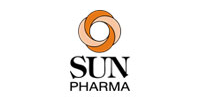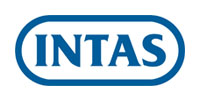Acupuncture:- The ancient method of finding a balance
Historically, acupuncture points were believed to be holes that allow entry into channels. These holes provide us gateways to influence, redirect, increase, or decrease the body's vital substance, qi, thus correcting many of the imbalances. Many studies and research were directed to understand the mechanism of acupuncture.
What is Acupuncture?
Acupuncture literally means 'needle piercing," the practice of inserting very fine needles into the skin to stimulate specific anatomic points in the body (called acupoints) for therapeutic purposes. Along with the usual method of puncturing the skin with the fine needles, the practitioners also use heat, pressure, friction, suction, or impulses of electromagnetic energy to stimulate the points. The acupoints are stimulated to balance the movement of energy (qi) in the body to restore health.
Acupuncture involves stimulating. In the past 40 years, acupuncture has become a well-known, reasonably available treatment in developed and developing countries. Acupuncture is used to regulate or correct the flow of qi to restore health.
To really understand how acupuncture works, it is necessary to become familiar with the basics of Chinese philosophy. The philosophies of the Dao or Tao, yin and yang, the eight principles, the three treasures, and the five elements are all fundamental to traditional Chinese acupuncture and its specific role in helping to maintain good health and a person's well-being.
What are the Effects of Acupuncture?
Acupuncture has been shown to stimulate the immune system. It also has affects the circulation, blood pressure, rhythm and stroke volume of the heart, secretion of the gastric acid, and production of red and white cells. It also stimulates the release of a variety of hormones that help the body to respond to injury and stress.
The Gate Control Theory of Pain
According to this theory, pain signals must pass through a number of high-traffic "gates" as they move from the area of injury upward through the spinal cord into the brain. Like a road or highway, these nerves can handle only a limited number of nerve signals at one time. The pain signals travel very slowly. We can generate other signals which move faster. The faster signals crowd out the slower ones because of the limited capacity of the nerves. (Remember the time sitting in traffic near a construction zone, where the two lanes merge into one. The fast cars on the merging lanes go further and merge ahead of the slower ones, making it nearly impossible for the slow traffic on the lane to move forward. Now think about the pain signals are the slow ones sitting there waiting for an opening to move through. If one can produce enough fast signals, it can effectively crowd out the pain signals.) Acupuncture generates competing stimuli and effectively blocks the slow pain signals from reaching the brain. The result: we never "experience the pain".
Electrical Theory
The body continually generates tiny but detectable electrical discharges. This electrical field influences the growth, maturation, and functioning of some types of cells. It is known that acupuncture points are concentrated in regions of low electrical resistance. Studies have shown that there is a correlation between the electromagnetic fields in the body and the channels or meridians. So, this electrical theory of acupuncture suggests that acupuncture works by influencing the body's electromagnetic fields. Acupuncture points have certain electrical properties, and stimulating these points alters chemical neurotransmitters in the body.













